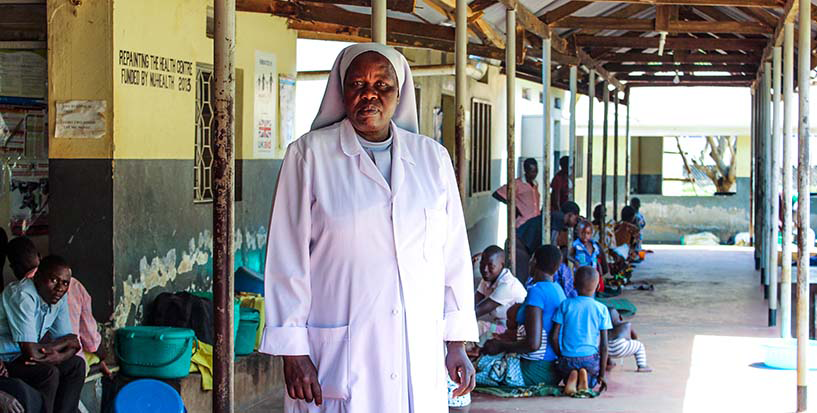To end tuberculosis, we must invest in a more streamlined approach
To end tuberculosis, we must invest in a more streamlined approach
by Ersin Topcuoglu
This op-ed was originally published in The Hill

When I was a young doctor in Turkey, I quickly learned to take a bird’s eye view of health care. I started working in a village in Mardin Province, visiting households with my first mentor, a midwife. Once in a home, we would do the job we came for, perhaps vaccinating the baby. However, it only made sense to use our time to see other people in the household as well. How was the pregnant sister doing? What about the uncle with tuberculosis (TB) — was he taking his medicines as prescribed? Did the family have clean drinking water and a sanitary latrine?
Later, two colleagues and I oversaw 52 health centers in the province. Our daily routine was to load our truck with all the supplies it could carry and hit the road, visiting health centers en route. When you had the chance for a trip, you could not focus on one disease; you focused on an entire community. The approach paid off for many health programs, from family planning to tuberculosis.
Thirty years later, this is still the way health care works in many parts of the world. But you wouldn’t know it when you look at how global health is funded. For the better part of the past three decades, the medical and development communities fought tuberculosis, among other killer infections, by focusing on quashing a single disease.
Yet TB still kills 1.3 million people annually, especially the poor. It crushes families, communities and national prosperity and rises alongside other diseases like HIV/AIDs and diabetes; they raise the risk for each other.
Disease-specific programs have made inroads and may perform well independently, but they can sputter when donor funding recedes, leaving countries no better off than when we started. I have visited a well-functioning, gleaming clinic funded by an HIV program while a general clinic next door is dilapidated. In the end, these clinics serve the same people. When a refrigerator is broken in one, every health program suffers.
What we need, instead, is to implement a comprehensive approach: one pot of money, one plan of action for systems and people in need. Fixing a leaking roof, ensuring an uninterrupted power supply, or training staff on using data to make sound decisions helps the whole community.
We also need comprehensively trained professionals to spot the tell-tale signs of TB when patients come in the door for treatment. One dirt road may lead to a health center with one clinician. If that person sees a baby with malaria and doesn’t notice that his father may have TB, that’s a missed opportunity. Solid pharmaceutical management is also needed to keep medicines affordable and accessible in every nook and cranny of a country, whether it’s bedaquiline for drug-resistant TB or artemisinin for malaria. Why bother making a delivery for a single drug? We don’t have the time or money to spare.
It is key to get all of these activities working in tandem as early as possible. If integration is delayed too long, disease-specific programs become singular and sophisticated, leading to what software engineers refer to as “integration hell” down the road.
In the past several years, the global health community has realized that to end TB, we can’t continue business as usual. Studies show that an integrated approach works. In Nigeria, Management Sciences for Health, the nonprofit organization for which I work, developed combined HIV/TB services at 41 treatment centers in five states.
The U.S. President’s Emergency Plan for AIDS Relief (PEPFAR) funded the effort and states have already begun to run and pay for the initiative themselves. In Uganda, a “one-stop shop” model for maternal health/HIV/TB services led by U.S.AID and funded by PEPFAR greatly increased the number of cases detected and treated.
The U.S. continues to lead amid dwindling support for global health development by traditional donors. Thanks to a strong commitment by our legislature, the U.S. even increased funds for TB work abroad in the current fiscal year. Still, the Global Fund to Fight AIDS, Tuberculosis and Malaria — an organization whose initial goal was to deliver medicines to fight those diseases and has evolved to support integrated interventions as well — is running out of funding. Over the next 18 months, the Global Fund will need a replenishment of at least $14 billion to carry on its work for another three years.
The U.S. Congress should pledge to help keep this vital organization well-funded. As Bill Gates pointed out in the Wall Street Journal recently, “Decades of data and experience suggest that money is the most important thing in the fight against disease. The correlation is extremely strong between levels of foreign aid for health and decreasing death rates for some of the deadliest diseases. As contributions go up, deaths retreat.”
Further, activities that promote integrated services to end TB should take priority in funding allocations. We also need to make sure that money is well-spent, which means governments, donors, global health professionals and providers collaborate on financing and continuously integrate activities and systems. Investing in this approach to attacking TB will finally give the world an edge over this age-old scourge that kills the most.
Ersin Topcuoglu, MD, MPH is senior principal technical advisor at Management Sciences for Health, a global nonprofit that works side by side with leaders in low- and middle-income countries to build strong, equitable and sustainable health systems that save lives and improve health outcomes.